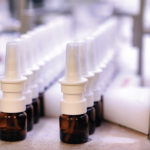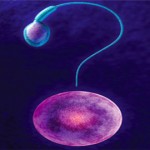In the first cohort, iscalimab at 150 mg and 600 mg subcutaneously every two weeks significantly reduced disease activity (ESSDAI) at 24 weeks compared with placebo. In the second cohort, iscalimab 600 mg showed a trend toward improvement in patient-reported symptoms (ESSPRI), though this was not statistically significant.5
Taken together, these studies have created a great deal of excitement around the CD40 pathway.
In a study from Dorner and colleagues evaluating remibrutinib, a selective oral Bruton’s tyrosine kinase (BTK) inhibitor, patients with moderate-to-severe Sjögren’s disease who met 2016 ACR/EULAR criteria and were anti-Ro/SSA positive were randomized to receive remibrutinib 100 mg once or twice daily or placebo for 24 weeks. At 24 weeks, remibrutinib significantly improved ESSDAI scores compared to placebo, though it did not significantly affect patient-reported symptom scores in the form of ESSPRI. There was also a trend toward improved unstimulated salivary flow, and the medication was found to be well tolerated, with a favorable safety profile and significant changes in blood gene expression and serum protein profiles.6
In a separate study from Dorner and colleagues investigating ianalumab, a monoclonal antibody against B-Cell Activating Factor (BAFF) Receptor (BAFF-R), patients were randomized to receive 5, 50 or 300 mg of the medication subcutaneously every four weeks. Sustained efficacy was observed with 300 mg dosing, as demonstrated by improvements in ESSDAI, patient- and physician-reported outcomes, and stimulated salivary flow rates. Autoantibody levels also showed numerical improvement. Of note, there were three cases of grade 3 neutropenia that occurred post-treatment.7
Dr. Nocturne’s talk created a buzz for a disease that is getting a lot of buzz. Time will tell in seeing which treatments pan out, but it is clear that Sjögren’s has entered the public consciousness in a way that it did not in the past.
Jason Liebowitz, MD, FACR, is an assistant professor of medicine in the Division of Rheumatology at Columbia University Vagelos College of Physicians and Surgeons, New York.
References
- Pringle S, Wang X, Verstappen GMPJ, et al. Salivary gland stem cells age prematurely in primary Sjögren’s syndrome. Arthritis Rheumatol. 2019 Jan;71(1):133–142.
- Meudec L, Goudarzi N, Silva-Saffar SE, et al. Development of salivary gland organoids derived from patient biopsies: A functional model of Sjögren’s disease. Ann Rheum Dis. 2025 Jul;84(7):1195–1206.
- Tarn JR, Howard-Tripp N, Lendrem DW, et al. Symptom-based stratification of patients with primary Sjögren’s syndrome: Multi-dimensional characterisation of international observational cohorts and reanalyses of randomised clinical trials. Lancet Rheumatol. 2019 Oct;1(2):e85–e94.
- St Clair EW, Baer AN, Ng WF, et al. CD40 ligand antagonist dazodalibep in Sjögren’s disease: A randomized, double-blinded, placebo-controlled, phase 2 trial. Nat Med. 2024 Jun;30(6):1583–1592.
- Fisher BA, Mariette X, Papas A, et al. Safety and efficacy of subcutaneous iscalimab (CFZ533) in two distinct populations of patients with Sjögren’s disease (TWINSS): Week 24 results of a randomised, double-blind, placebo-controlled, phase 2b dose-ranging study. Lancet. 2024 Aug 10;404(10452):540–553.
- Dörner T, Kaul M, Szántó A, et al. Efficacy and safety of remibrutinib, a selective potent oral BTK inhibitor, in Sjögren’s syndrome: Results from a randomised, double-blind, placebo-controlled phase 2 trial. Ann Rheum Dis. 2024 Feb 15;83(3):360–371.
- Dörner T, Bowman SJ, Fox R, et al. Safety and efficacy of ianalumab in patients with Sjögren’s disease: 52-week results from a randomized, placebo-controlled, phase 2b dose-ranging study. Arthritis Rheumatol. 2025 May;77(5):560–570.



